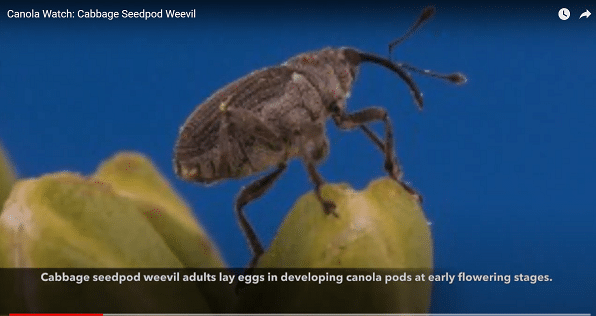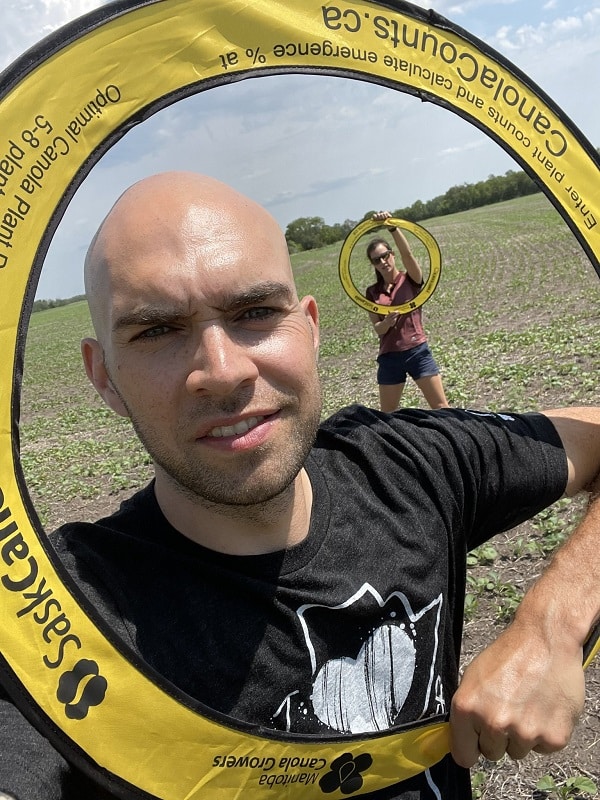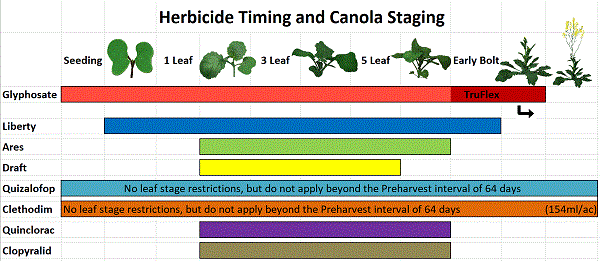
Get on top of cabbage seedpod weevil
Since first discovered in southern Alberta, the canola insect pest known as the cabbage seedpod weevil has made its way across the southern Prairies over the years, threatening considerable yield loss. Basically, the earliest canola to flower is most at risk of infestation so you need to start sweeping for the insects. Watch the video above for more information. This article is a know-your-enemy resource with a wide gamut of scouting and management tips, including when to spray. For interesting findings on these insects, check out these research projects.

CanolaCounts a quick, easy way to count plants and win prizes
If you’re a canola grower or agronomist who hasn’t used CanolaCounts.ca yet, here are some good reasons to do so:
1. Scouting fields for plant establishment and recording the results can help make better decisions for next year — you can’t improve what you don’t measure.
2. It’s quick and easy. It only takes around 60 seconds to input data.
3. You can see how your establishment compares to your neighbours’.
4. You can win a prize! You’re automatically entered in a weekly draw for a $50 gift card from Peavey Mart and a grand prize of $100 with each CanolaCounts entry. Odds of winning both are good.

Do I need a second herbicide pass?
This is the time of year when canola growers may be asking themselves if they should do a second herbicide pass. A second application of in-crop herbicide is not always economical if the crop is well established, competitive, and ahead of the remaining weed population. If you don’t know that for sure, scouting (while using CanolaCounts.ca) is an important way of finding out. Second-pass herbicide: why and when? offers some in-depth advice you can use when making this critical decision. Consult the chart above to know which herbicides to use at the various growth stages of canola.
Act quickly if top-dressing nutrients
If you’re thinking of applying a top-dress of nitrogen or sulphur fertilizer, your window of opportunity is closing fast. Nitrogen is ideally applied before the five-leaf stage so it is available when plant nitrogen utilization increases. Check out this article for information on when top-dressing makes sense and when it doesn’t. For tips on applying nitrogen and sulphur in-season, click here.
Having a hard time? Remember it’s not over ‘til it’s over
It would be an understatement to call this year’s canola growing season “challenging.” Depending on where you are on the Prairies, you may have experienced drought, high winds (even tornados), hail, and frost. What’s important to remember is that overall yield potential for canola is not yet set; if your crop is looking bad right now, there’s still potential for things to turn around. This might include a timely rainfall that makes a huge difference, for example. In the meantime, check out Spraying tips for tough conditions for some timely advice on spraying in adverse conditions.
